CryptoZoon is a GameFi game running on BSC, with its own P2E mode. By purchasing or incubating little monsters (Zoan in the game, an NFT asset), players can get token Zoon rewards by participating in game battles. At the same time, each little monster is a kind of NFT asset, which can be freely traded and realized.
Since Crypto was launched on July 28, the cumulative number of users has exceeded 60k, and the total number of NFTs issued has exceeded 100K. The token Zoon has been listed on Gate, MX, Pancake and other exchanges.
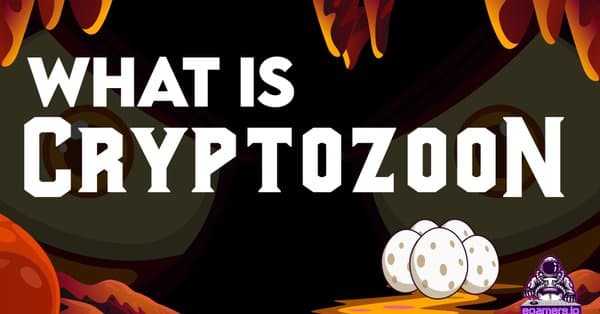
CryptoZoon has attracted countless fans on social media because of its simple operation and remarkable money-making effect. This article comprehensively discusses CryptoZoon’s core gameplay, economic model, money-making effect (input-output), future hidden danger analysis of the project, etc.
first level title
01 The core gameplay of Crypto Zoo
CryptoZoon is similar to the popular game Axis, in that players need to own an in-game monster to join the game. There are currently 2 ways to obtain small monsters:
1) Use 12,800 (previously 12,500) Zoon tokens or equivalent BNB/BUSD to buy an egg, and then the type and level of the hatched little monster (that is, the Zoan in the game) are completely random, similar to opening a blind box.
2) Go directly to the NFT market and buy ZOAN with Zoon. Purchase link entry: https://app.cryptozoon.io/marketplace
There are 4 types of all small monsters (Plasmer, Hydrein, Stonic, Skyler), and they are divided into 6 levels according to their rarity, so there are 24 types of monsters in CryptoZoon. high.
secondary title
Yaki Monsters (1V1 Battle)
In the battle field of CryptoZoon, players can choose enemies for 1V1 battles, every 4 hours is a round, and the number of battles in each round is related to the level of the little monster, as follows:
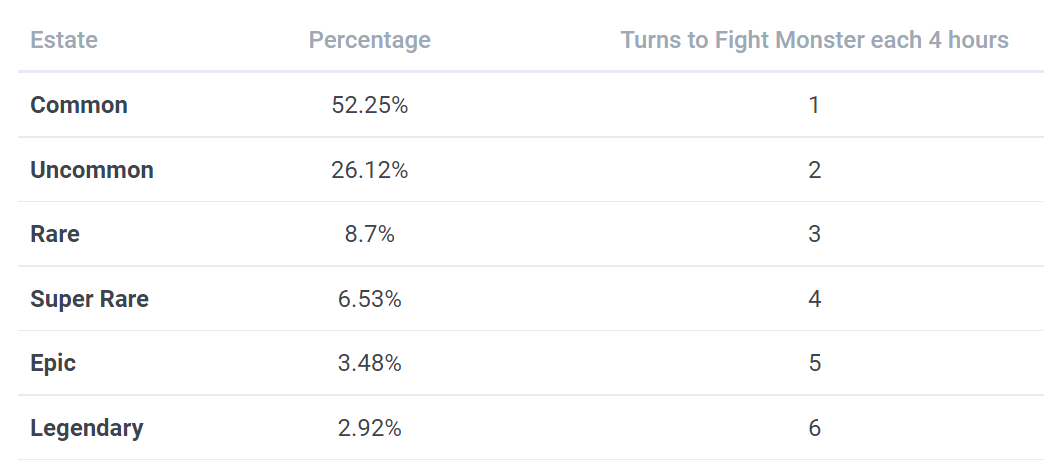
At the same time, when fighting against different enemies, the winning probability of the little monsters, the experience points obtained by winning the battle, and the ZOON token rewards will all be different.
For example, if you have a little monster with level 2, you can fight 2 games every 4 hours. If you fight 2 games with the enemy with level 3 in the picture above (Mummy in the picture), the probability of winning each game is 60 %, the Zoon reward won by each battle victory is between 211-264, and 8-10 experience points will be increased at the same time. (For specific gold mining input and output, see the detailed introduction later)
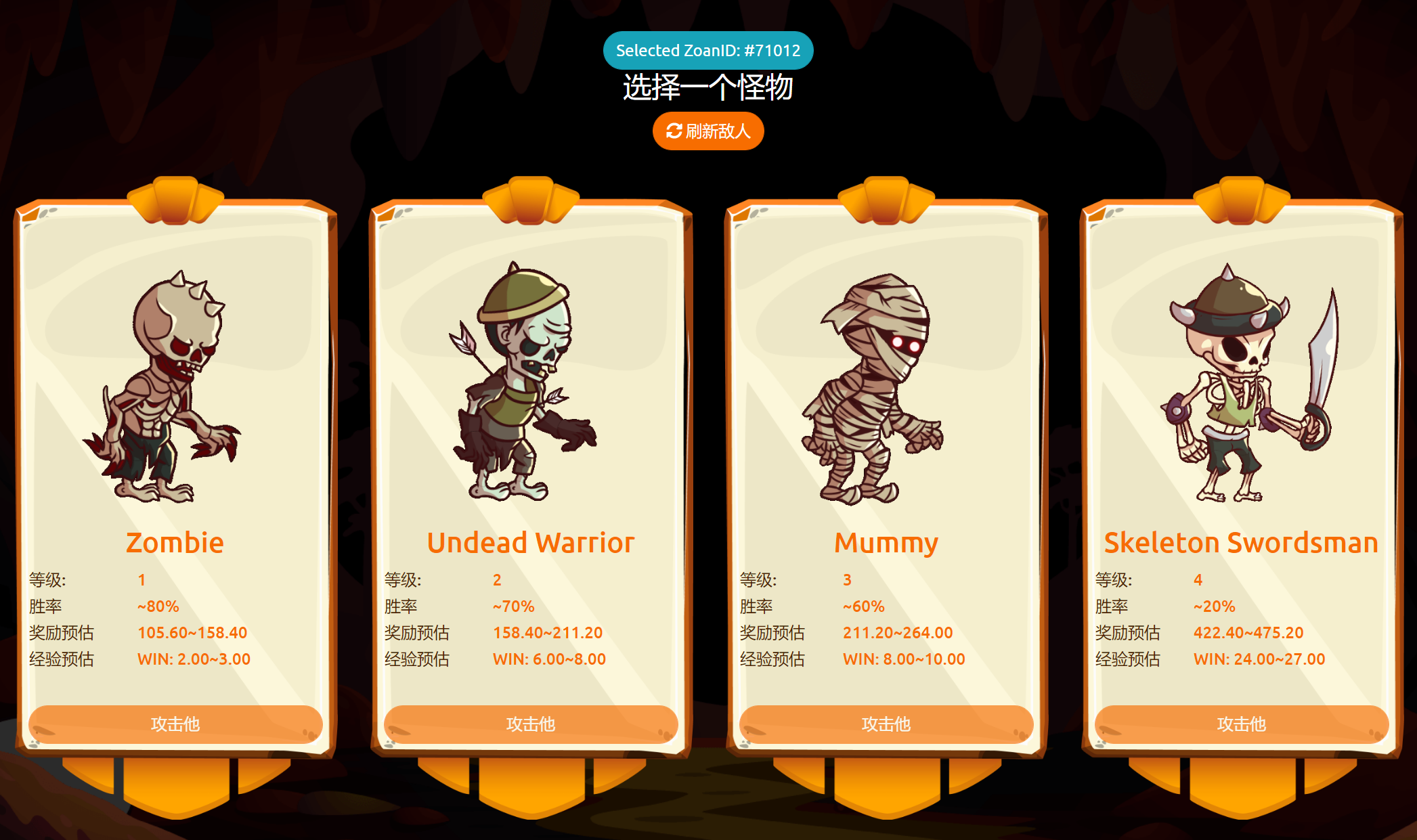
secondary title
Yaki Boss (PV1 team battle)
As an upgraded version of the previous 1V1 battle, the yaki boss gameplay has higher requirements for fun and difficulty, and of course more rewards will be obtained after winning.
The PV1 team battle is held once a week, and the total prize pool is 100 BNB, which will be distributed to 2 big bosses (45 and 55 BNB respectively). Players need to choose 4 monsters from their small monsters to form a team, and then choose the big boss to fight.
In this link, players need to pay 100/200 Zoons for each monster participating in the battle as a ticket to participate in the battle. Players team up to fight the boss and consume the boss' blood. When the blood volume of the big boss is exhausted or the time expires, all players participating in the battle will share the BNB in the prize pool (45 or 55)
secondary title
Training (not yet online)
The first two ways of playing are players versus the system, and this part can be understood as a battle between players. Specifically, it includes three modes: challenge, random battle, and waiting battle. Players need to deposit at least 1,000 Zoons as tickets to participate in each game. Each player chooses 3 little monsters to participate in the battle. If the battle wins, they will get 1,000 Zoons, and the team will get a higher ranking. In addition to the 1000 Zoon rewards for each battle, players with a high winning rate every week can also get additional Zoon rewards.
secondary title
Farm mode (not yet online)
secondary title
little monster deal
That is to say, most GameFi games have NFT asset transactions, and players can freely sell their own little monsters. Among the little monsters currently on sale, the highest offer is worth 150,000 Zoon (about 4,800 US dollars)
The above are the current main gameplays of CryptoZoon. Since its launch, the game has been updated and upgraded in multiple versions, and new gameplays are constantly being released.first level title
02 Token Zoon Economic Model
In addition to the above-mentioned gameplay, CryptoZoon is essentially a blockchain project, and economic model design is equally important to the long-term development of the project. In the game, Zoon, as the only token, penetrates into all aspects of the game and also has multiple functions.
Token Issuance
Token Zoo, with a maximum circulation of 1 billion, is distributed as follows
Token Circulation
Token Value and Use Cases
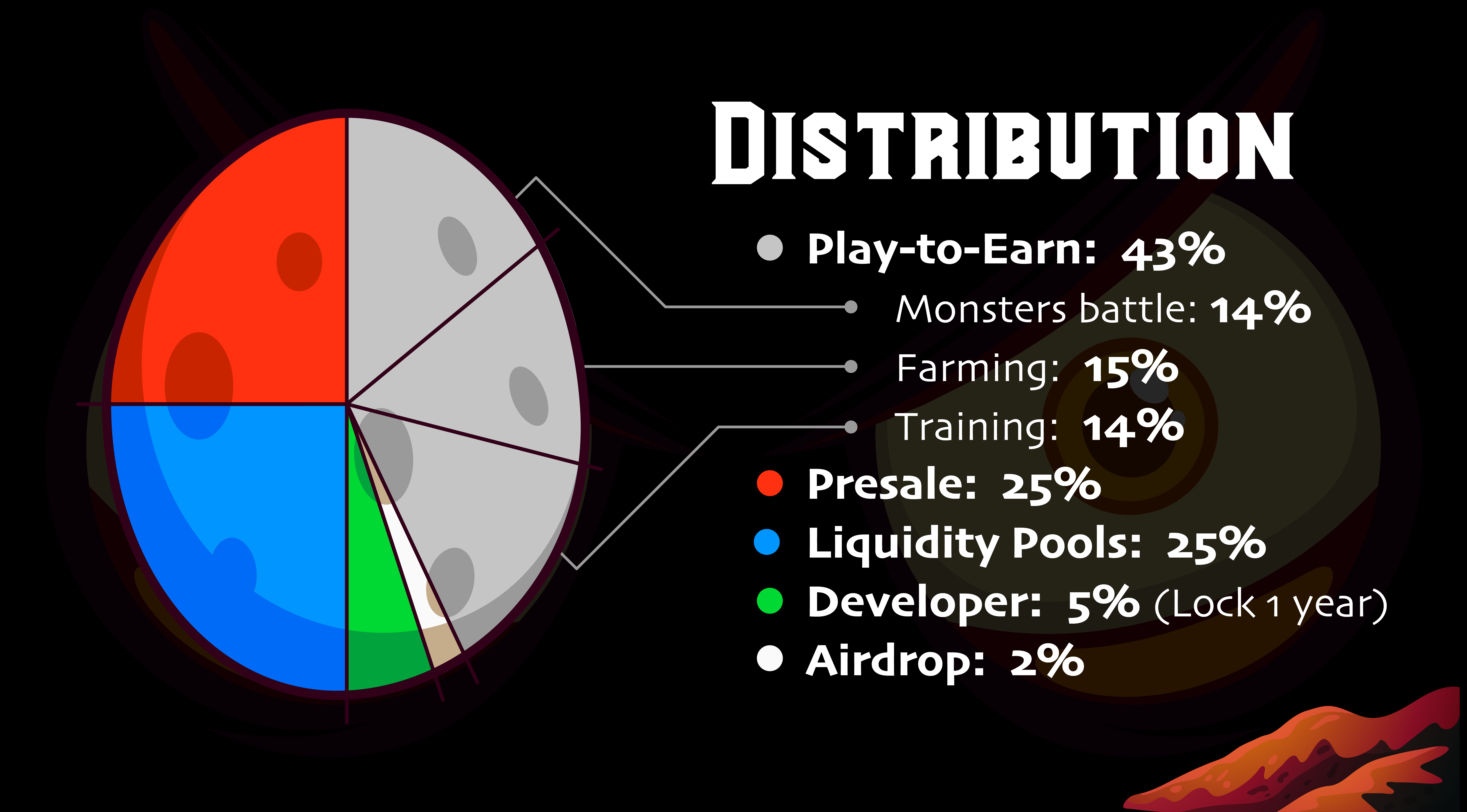
1) In the pre-sale part, 250 million Zoons are sold through BNB public IDO at a price of 0.001U, with no positions.
2) Monsters Batter: used for 1V1 battle rewards, automatically distributed according to the number of battles in the game and the reward mechanism.
3) For Farming and Training, the distribution mechanism is unknown because the relevant functions have not been launched
According to the cryptocurrency information platform Coinmarketcap, there are currently 602 million Zoons in free circulation. According to the current price (0.032), the circulation market value is about 19 million US dollars
The total number of issued Zoons is about 848 million, and the difference between issued and circulating Zoons is the game rewards to be distributed. From the blockchain browser, we can know that as of August 17, the cumulative number of holding addresses exceeded 43,000 (excluding addresses held by exchanges), and the holding addresses showed a continuous upward trend.
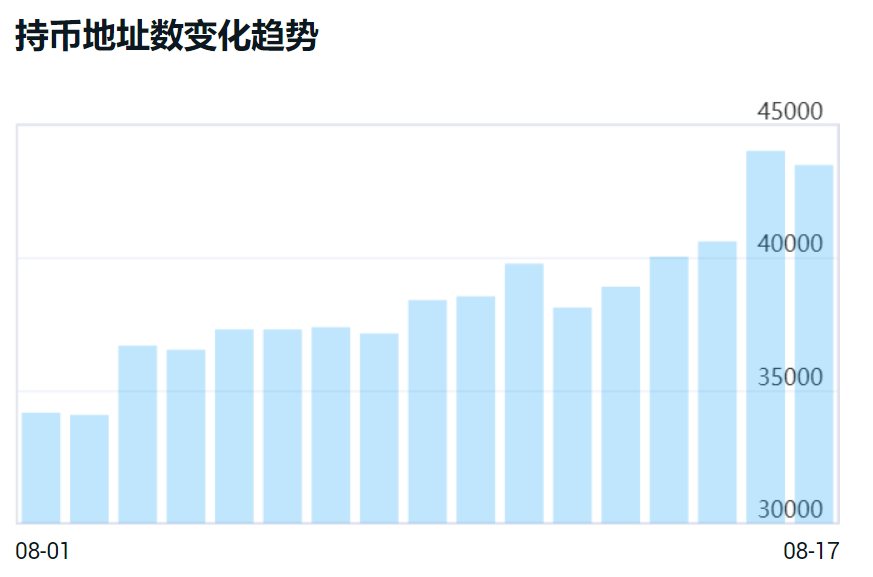
Image source: https://www.feixiaohao.cc/
In addition, in order to reduce the circulation, the Crypto Zoon team launched a repurchase plan, which will use 50% of the funds of new players to buy eggs to incubate little monsters for repurchase and destruction, and 50% for increasing the liquidity of ZOON, which has been cumulatively destroyed 14.65 million ZOON (worth 700BNB).
Unlike the obvious chain game Axis which adopts a dual-token mechanism, Crypto Zoo only has one token, Zoon. From the perspective of attributes and uses, the project side endows Zoon with more practical value and no community governance value. Specific use cases are as follows
1) Payment medium
Zoon is used for all payment links in the game: buying hatched eggs, buying monsters, NFT transactions, etc. As mentioned above, Crypto ZOON currently has 100K+ small monsters in circulation, most of which are subscribed by players through BNB or ZOON, which creates an entrance for Zoon recycling.
2) Game incentives
In multiple stages of the game, players can get 43% of the total amount issued by Zoon as game rewards, which is also the embodiment of Crypto Zoon's Play to earn mode.
However, according to the current plan, the total amount of ZOON used for incentives in the game is limited, and as the number of players in the game increases, the available ZOON becomes less and less. If no adjustments are made to the existing game incentive mechanism, it means that future player rewards will continue to decay, and the game’s money-making effect will also weaken.
To sum up the above, Crypto Zoo's token economic model has the following advantages and disadvantages:
① Most of the tokens are used for game development and incentives. The P2E model is obvious, and it is easy to attract users in the early stages of the game.
②The economic model is inelastic, and circulation and user growth cannot be effectively coordinated. If the issuance mechanism of the token zoo is not adjusted, it will restrict the development of the project in the middle and late stages.
③The single-token Zoon has both practical value and investment value. There is a certain conflict between the two, which is not conducive to the long-term development of the project.
first level title
03 How does Crypto Zoo make money?
secondary title
Sustainability of user growth
The Bubble of Little Monster NFT Assets
Homogeneous product competition, lack of moat
Input costs
1) Get the Zoon cost of monsters
You can directly spend 12800 Zoons to buy an egg and hatch it, or you can buy it in the market on the game website. The former is a blind box opening mode, and it is very exciting to open high-rarity monsters (steady profit). In the small monster trading market, low-rarity and low-level monsters only need 4000+Zoon to buy. Here, 12,800 Zoons are used as the cost.
2) Battle gas fee
Crypto Zoo earns money mainly through battles, and each battle needs to be uploaded to the chain, and BNB needs to be paid as a gas fee. Gas fee is a dynamic cost, which is determined by the activity on the BSC chain and the battlefield. The recent single transaction fee on BSC is about 0.5U. Then multiply by the number of battles to calculate the dynamic cost.
3) Time cost
secondary title
game output
At the current stage, the output income of the game mainly comes from three aspects:
1) 1V1 battles: The rewards won in each battle are different from the probability of winning. Through the mathematical probability theory model, the theoretical income of each game can be roughly calculated to be about 101.6 (the process will not be described in detail here)

In addition, in order to reduce the selling pressure of players winning Zoon, Crypto Zoo set a certain threshold for the withdrawal of game rewards in the later stage: 15% of the handling fee will be deducted for withdrawal within 5 days of output, and no deduction will be deducted for more than 5 days.
2) Participate in the Yaki Boss (PV1 team battle): This part requires players to hold at least 4 small monsters, and the rules are more complicated. It is not a mainstream public game, so no analysis will be made.
3) Selling little monsters: The little monsters themselves are NFT assets that can be resold to other players. The basic logic is that the higher the rarity, the higher the level, and the higher the experience value of the monster, the higher the price. Selling monsters means that you can no longer participate in the battle to make a profit, and it is also the main way to recover the initial investment. The platform will charge a 5% handling fee based on the price of the little monster. For details, please refer to the Market section of the official website.
From the above canRoughly calculate the earnings of Crypto Zoo:
Estimated income = 101* number of battles + price of small monsters * 95% - Gas fee * number of battles - 12800 Zoons
first level title
04 Future Development Analysis
A little summary of the above, we can find that Crypto Zoon currently: more than 60,000 users, 7K+ daily active users, more than 100K small monsters (NFT cards), more than 600 million token Zoon circulation, online gate, mx and other headlines On the centralized exchange, the price of Zoon is stable at 0.03u, ranking at the head of the BSC ecological GameFi sector.
These results were only obtained in more than 20 days after going online, and the results are impressive.
But behind the dazzling data, there are also some crises and hidden dangers that cannot be ignored. The Crypto Zoo team also seemed to be aware of it and began to adjust the game mechanics. Here, or a brief summary.
The core of Crypto Zoon's ability to attract users is the money-making effect. Further dismantling the money-making effect comes from the stability of the currency price and the stability (or slow decline) of the game output Zoon. If the two cannot be balanced, the money-making effect will inevitably decrease. If the money-making effect is not obvious, the attractiveness to new users will be significantly reduced.
The support of the currency price mainly depends on the purchase of eggs by new users to incubate new pets, the investment demand of the secondary market, and the purchases brought about by the project party’s repurchase and destruction. The stability of Zoon’s output depends on the total output of Zoon in the game and release speed. In the short term, there are means to adjust these two parts, but in the medium and long term, there will be greater pressure.
At present, some Crypto Zoo players can clearly feel that the income has decreased, and the high income is destined to be difficult to maintain. When the game income decreases, more stories are needed to maintain the market's confidence in the price of Zoon.
At present, the cumulative number of NFTs produced exceeds 100K. Based on the minimum price of 6000 Zoon/piece, the value of NFT in the game exceeds 600 million Zoons. If calculated based on the purchase price of 12,800 Zoons for the little monster, it is worth more than 1.28 billion NFTs. The value of NFT card storage far exceeds the market value of the circulating Zoon.
When the game’s money-making effect is not obvious, the value bubble of this part of NFT cards will slowly burst, which will inevitably cause the loss of holders and leave the game, which will lead to a further vicious circle. Whether it can effectively slow down or gently reduce the foam will determine how far Crypto Zoo can go.
Crypto Zoo is currently facing many competition problems. Although Crypto Zoo is vigorously building communities in multiple countries/regions, judging from the number of people and interactions in each community, it is not ideal. How does Crypto Zoo build its own moat when the competition tends to be homogeneous?
Since August, many Gamefi projects have been launched one after another. These projects all have their own P2E mode, and the game quality is uneven. They all want to take advantage of the Gamefi boom to snatch users. On the user side, Gamefi players can easily come to make money, but they will inevitably leave easily because of more profitable competing products, and user loyalty is insufficient.
When the project supply side increases, but the market space is limited. If there are no more popular models like Axis to attract users outside the circle, many Gamefi projects are only targeting currency circle users, fighting for stock, and the competition will be extremely fierce.
The above problems are not only faced by Crypto Zoo, but also by many other GameFi games. The P2E model is a double-edged sword. It can quickly bring in users in the short term, but at the same time it overdraws future value. How to strike a balance among them, how to retain users if it really improves the second attractiveness of the game besides making money, is worthy of deep thinking by many Gamefi project designers.
Relevant basic information:
Project official website: https://cryptozoon.io/
zoo contract address (BSC): 0x9D173E6c594f479B4d47001F8E6A95A7aDDa42bC
Project community: https://t.me/CryptoZoonBSC





